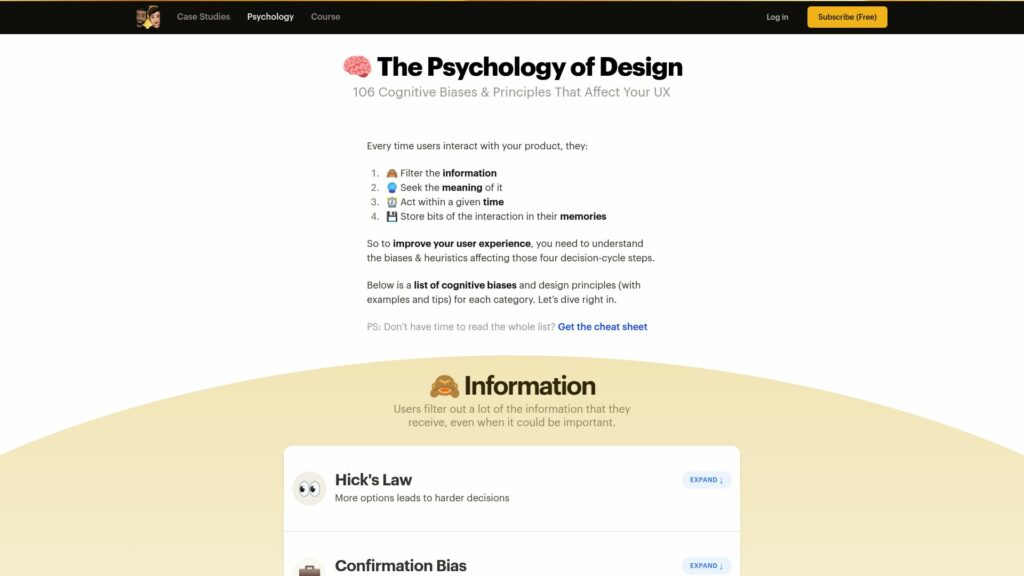🧠Psychology of Design: 106 Cognitive Biases & Principles That Affect Your UX
106 cognitive biases influence user experience (UX) by affecting how users filter information, seek meaning, manage time, and store memories. Understanding these biases can enhance UX design. Key examples include Hick's Law (more options complicate choices), Confirmation Bias (users seek supportive evidence), and the Aesthetic-Usability Effect (attractive designs appear easier to use). Resources for deeper learning include books on behavioral psychology and cognitive biases, along with a cheat sheet for quick reference on these principles.
